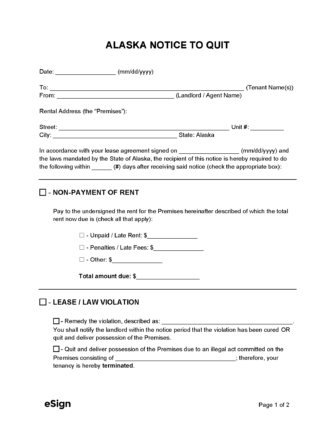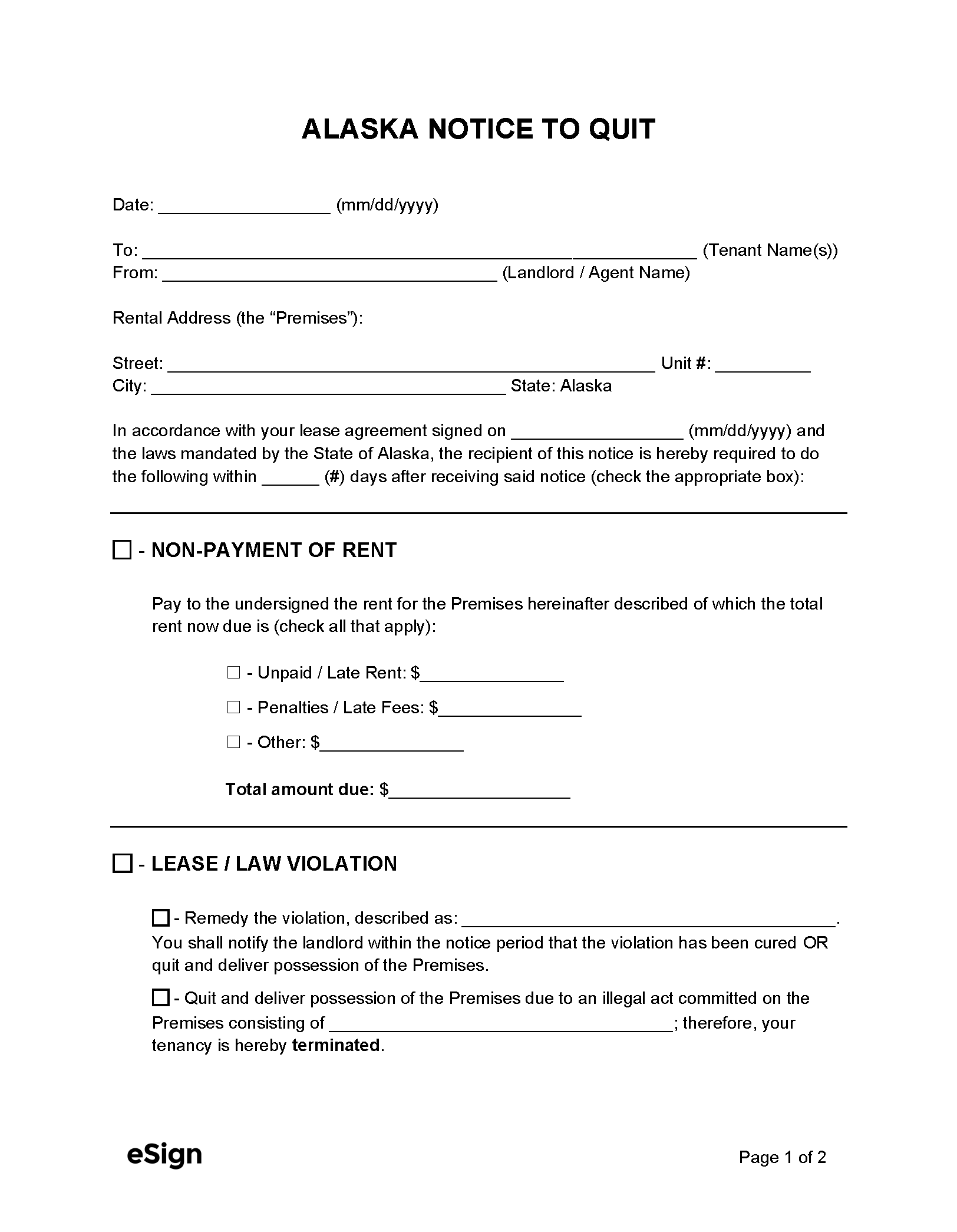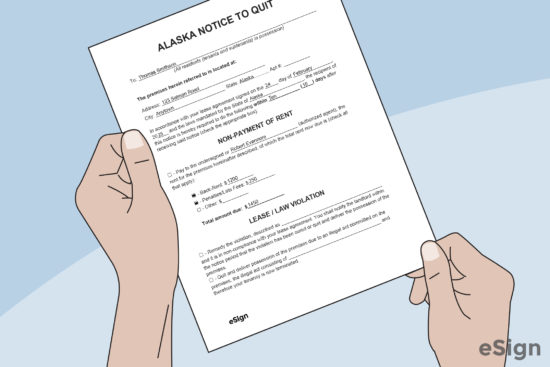Eviction Notices: By Type (6)
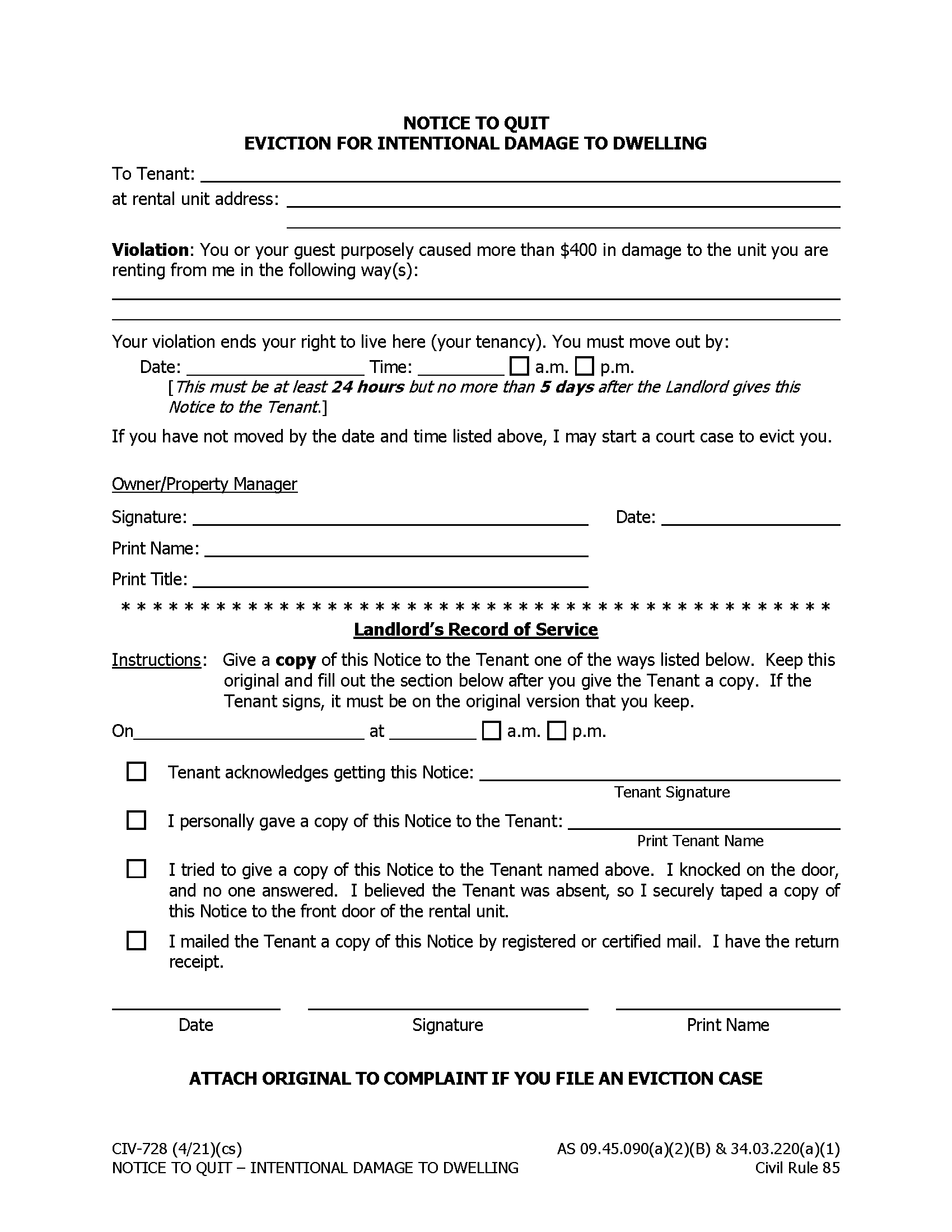
7-Day Notice to Quit | Non-Payment – Used when the rent has not been paid by the tenant.
Download: PDF
|

24-Hour Notice to Quit | Intentional Damage – The landlord can terminate a lease with 24 hours’ notice if the tenant intentionally damages the rental property.
Download: PDF |
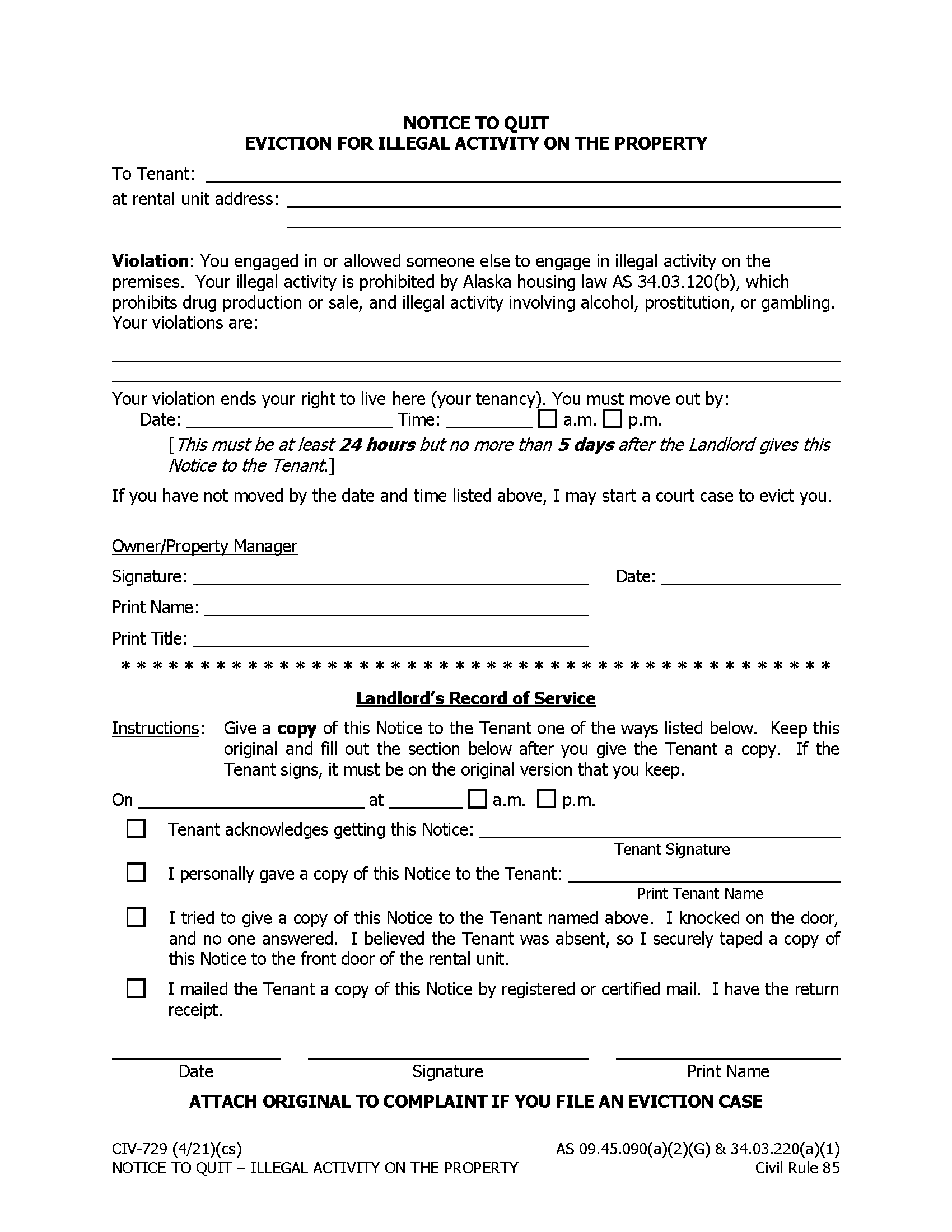 5-Day Notice to Quit | Illegal Activity – Used if the tenant conducted or permitted anyone to perform illegal activities on the property. 5-Day Notice to Quit | Illegal Activity – Used if the tenant conducted or permitted anyone to perform illegal activities on the property.
Download: PDF |
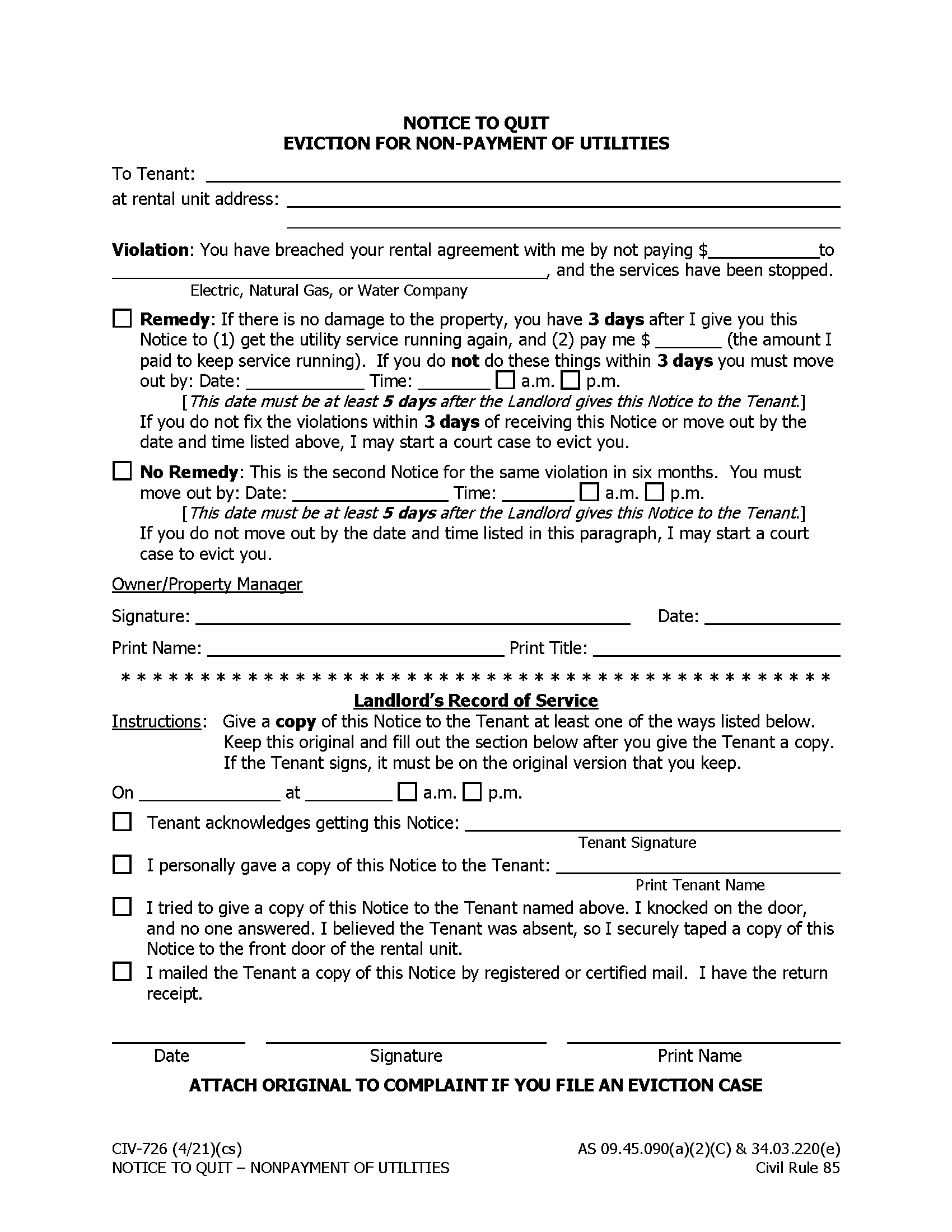
3/5-Day Notice to Quit | Unpaid Utilities – Used by landlords when tenants have outstanding utility bills.
Download: PDF
|
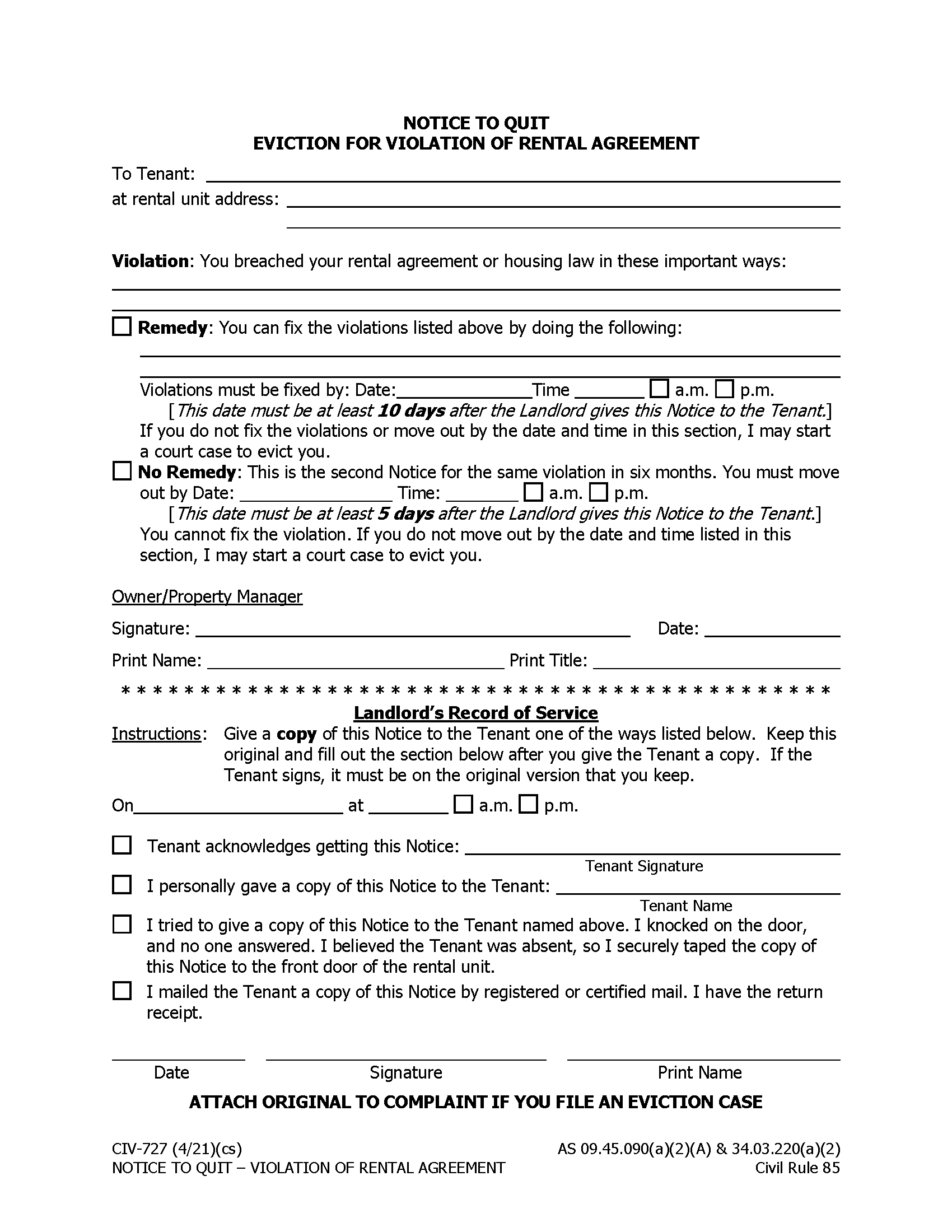
10-Day Notice to Quit | Non-Compliance – For any violation not related to the payment of rent, utility fees, intentional damage, or illegal activity.
Download: PDF |
 30-Day Notice to Quit | Month-to-Month Lease – Used for canceling a periodic rental arrangement. 30-Day Notice to Quit | Month-to-Month Lease – Used for canceling a periodic rental arrangement.
Download: PDF, Word (.docx), OpenDocument |
Notice Requirements
How to Evict a Tenant in Alaska
Step 1 – Notice to Quit
The landlord must first notify the tenant that they intend to terminate the tenancy, specifying the cause for termination, by delivering one of these notices to quit:
Step 2 – Deliver Notice

Step 3 – File for Eviction
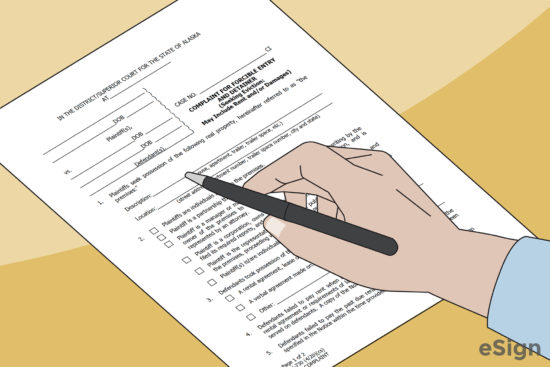
Step 4 – Serve the Tenant
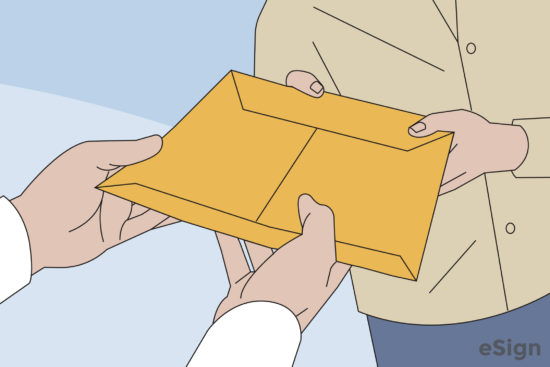
Step 5 – Eviction Hearing
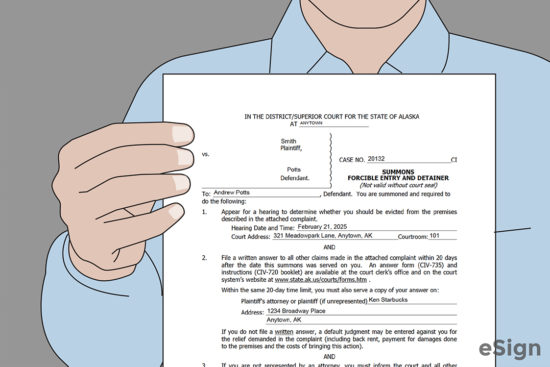
Step 6 – Damages Claim (If Applicable)
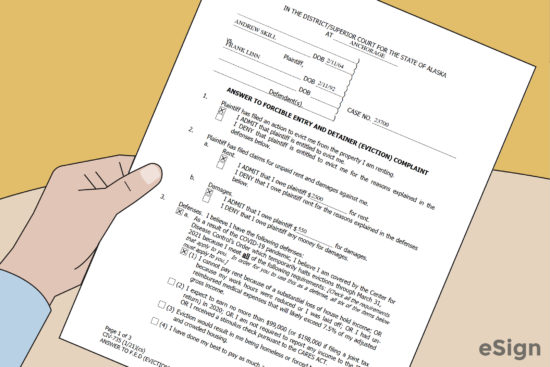
Step 7 – Schedule Trial for Damages Claim (If Applicable)

Step 8 – Trial for Damages Claim (If Applicable)
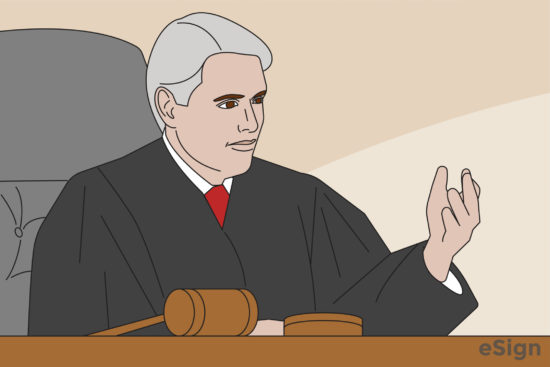
Court Forms + Resources
Forms
- Complaint for Forcible Entry and Detainer (CIV-730).pdf
- Signed by: Landlord
- Summons – Forcible Entry and Detainer (CIV-105).pdf [Fairbanks Version | Anchorage Version]
- Signed by: Court Clerk
- Affidavit of Compliance (CIV-731.1)
- Signed by: Landlord and Court Clerk or Notary
- Information Sheet (CIV-732)
- Signed by: Landlord
- Case Description (CIV-125D).pdf
- Signed by: N/A
- Service Instructions (CIV-615).pdf
- Signed by: N/A
- Answer to F.E.D. Complaint (CIV-735).pdf
- Signed by: Tenant
- Judgment for Possession (CIV-300).pdf
- Signed by: Judge
- Writ of Assistance (CIV-575).pdf
- Signed by: Judge and Court Clerk
- Default Judgment (CIV-745)
- Signed by: Judge and Court Clerk
- Memorandum to set Civil Case for Trial (CIV-200).pdf
- Signed by: Landlord
Resources
